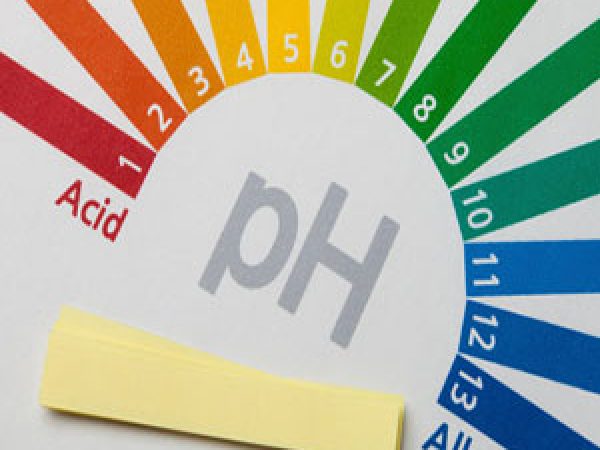The Expanding Potential of Liquid Biopsy to Detect and Monitor Cancer
In the span of a decade, the idea that tumor-derived molecules circulating in the bloodstream and other body fluids could be leveraged to reveal the presence of cancer and monitor its course has become reality.
The usefulness of circulating biomarkers for disease surveillance and to guide treatment decisions is now well established. The liquid biopsy assays approved so far by the U.S. Food and Drug Administration can be used to identify eligibility for certain targeted treatments, gauge the response to therapy, and monitor disease progression in patients with lung, breast, prostate, colorectal, ovarian, and other solid cancers.
The approved liquid biopsy tests are based on detection and analysis of two biomarkers: circulating tumor cells (CTCs), which are shed by the primary tumors and travel in the bloodstream to distant sites; and circulating tumor DNA (ctDNA), which is released into the bloodstream from tumor cells or CTCs undergoing cell death and represents a fraction of the cell-free DNA (cfDNA) normally present in the blood.
In this post, we will review some of the latest research in the liquid biopsy field.
Liquid Biopsy Tests to Detect Cancer Early
Although the full potential of liquid biopsies to detect cancer before symptoms appear has not been realized yet, this is a very active field of research, and several clinical trials have shown encouraging results, as discussed in a previous post.
Liquid biopsy-based multicancer early detection (MCED) tests aim to detect multiple cancer types early from a single blood sample. Several MCED tests are currently under development, leveraging different technologies to identify abnormal cfDNA features that are associated with cancer, including aberrant DNA methylation. Research has shown that abnormal DNA methylation patterns are a characteristic of cancer cells. A study recently compared multiple early detection methods and identified methylation as the most promising.

At the AACR Annual Meeting 2023, researchers presented a study of an MCED test that uses a new platform to analyze DNA methylation. While most tests are based on chemical treatment of DNA before sequencing, the new platform captured methylated cfDNA molecules without chemical or enzymatic treatment.
According to presenter Ben Ho Park, MD, PhD, from Vanderbilt University Medical Center and Vanderbilt-Ingram Cancer Center, this platform was cost effective and preserved the quality of the cfDNA.
The authors conducted a retrospective study to assess the ability of the platform to detect 12 cancer types in a cohort of approximately 4,000 people that included individuals with newly diagnosed, treatment-naïve cancer and age- and gender-matched controls. Approximately 50% of the cancer cases were early stage.
The test was able to discriminate cancers from non-cancers with high accuracy, including stage I and II cancers and cancers that typically shed low amounts of cfDNA and are more challenging to detect through MCED tests, such as bladder, breast, renal, prostate, and endometrial cancer.
Studying the size of cfDNA fragments to find cancer
cfDNA exists in fragments of varying sizes. Analyzing the “fragmentome,” or the size and pattern of these fragments along the genome, can potentially be used to detect cancer. Researchers have recently developed a machine learning-based method called DNA evaluation of fragments for early interception (DELFI) and applied it to detect different stages and subtypes of lung cancer with high sensitivity.
Based on the fragmentation profiles, the model was used to generate a score for each patient, called the DELFI score. The authors found that individuals with cancer, including early-stage HCC, had significantly higher scores than the cancer-free individuals both in the high-risk group and in the average-risk group. The DELFI method demonstrated high sensitivity for detecting cancer and performed better than the alpha-fetoprotein biomarker.
In a study published in Cancer Discovery, the authors implemented this approach for detection of liver cancer. The study analyzed cfDNA samples from 75 patients with hepatocellular carcinoma (HCC) and 426 individuals without cancer, 133 of whom had conditions that increase the risk for HCC, such as cirrhosis and viral hepatitis.
According to the authors, fragmentome analysis could potentially be used as a cost-effective test to improve liver cancer screening and active surveillance in at-risk individuals.
Leveraging Extracellular Vesicles as a Source of Liquid Biopsy Analytes
In addition to CTCs and ctDNA, researchers are exploring other sources of circulating biomarkers and analytes for liquid biopsy.
Extracellular vesicles (EVs) are membrane-wrapped particles that are released by most cell types and carry different types of molecules, including proteins, lipids, and nucleic acids. Originally considered a means to eliminate cellular waste, EVs play critical roles in cell-to-cell communication, serving as tiny packages the cells send to each other to exchange information and material. Given that tumors shed EVs in the blood, their molecular cargo is being evaluated as a source of tumor-derived material.
The use of EVs for liquid biopsy applications has some advantages over CTCs and ctDNA. EVs are more abundant in the blood circulation than CTCs and, thanks to their structural features, remain stable even in harsh tumor microenvironment conditions. In addition, their cargo molecules reflect the physiologic state of the cells of origin.
Some studies have suggested that the intact DNA molecules present in EVs (evDNA) could be leveraged for the detection of cancer mutations. For example, a study evaluated the use of evDNA for the diagnosis and surveillance of colon cancer. The results showed that the detection rate of KRAS mutations was higher using evDNA than cfDNA.
Several EV-derived microRNAs are being assessed as diagnostic and prognostic biomarkers. In addition, researchers have explored sequencing of EV-derived long RNA (evlRNA), which includes messenger RNA (mRNA), circular RNA, and long noncoding RNA.
A study compared evlRNA isolated from patients with early-stage lung adenocarcinoma before they underwent surgery and from control individuals. The analysis focused on protein-coding mRNAs that were differentially expressed between the cancer and control groups to build a machine learning model based on a 23-gene panel. This panel could distinguish lung adenocarcinoma samples from control samples with high sensitivity, specificity, and accuracy, suggesting that it may have diagnostic value for early-stage lung adenocarcinoma and that evlRNA sequencing could be combined with low-dose computed tomography to reduce false-positive rates in lung cancer screening.
One significant challenge in the application of EVs for liquid biopsy is their complex isolation. Researchers are investigating new methods to isolate EVs, to distinguish EVs of tumor origin from those derived from normal cells, and to profile their contents.
Non-tumor-Derived Biomarkers
In addition to their function in blood coagulation, platelets play an active role in cancer, contributing to metastasis. In the process, they take up nucleic acid and proteins released by tumor cells. Furthermore, although platelets lack a nucleus, they contain mRNA and are capable of protein synthesis, a process that can be altered in response to signals from cancer cells. Such “tumor-educated platelets” (TEPs) are being assessed as a biosource for liquid biopsy.
A research team developed the thromboSeq RNA sequencing method to profile the mRNA content of TEPs for cancer diagnosis. In a subsequent study, they showed that thromboSeq was able to detect the presence of 18 cancer types. Cancer signals were detected in two-thirds of the patients with stage I-IV cancer and half of the patients with stage I-III tumors. This approach could also correctly determine the tumor site of origin of five different tumor types in more than 80% of the patients, although the accuracy was higher in patients with metastatic tumors. In this study, the performance of TEP RNA sequencing was comparable to that achieved through other liquid biopsy approaches and, according to the authors, TEP RNA analysis could complement other biomarkers for cancer detection.
Improving the Sensitivity of Liquid Biopsies
One challenge that limits the application of liquid biopsies in the clinic is the very low amount of cfDNA in the blood. Research presented at the AACR Annual Meeting 2023 showed that cfDNA recovery might be boosted through the use of a priming agent given before blood collection. This agent consisted of engineered monoclonal antibodies that persist in the circulation and bind cfDNA, protecting it from being quickly cleared from the blood. In tumor-bearing mice, this priming strategy led to a 19-fold increased ctDNA recovery, improving the sensitivity of cancer detection and suggesting that priming agents could represent a viable strategy to boost the sensitivity of liquid biopsies and expand their applications.



